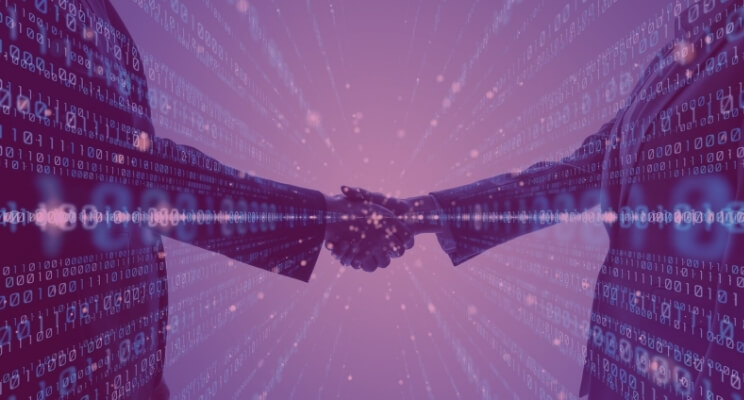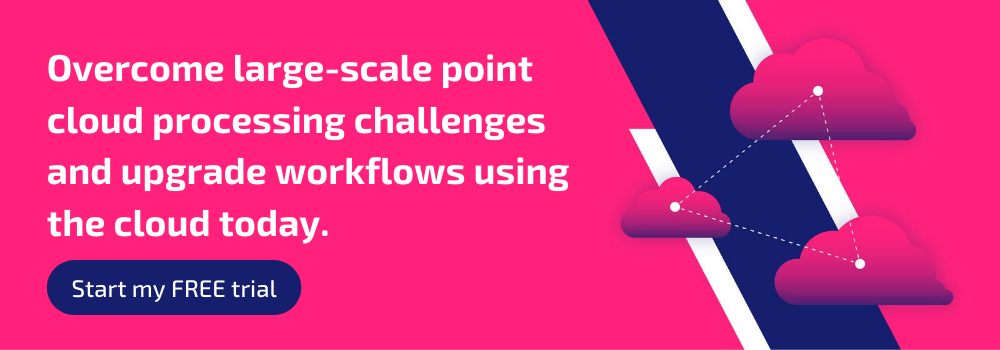4 inspirational examples of digital twin applications

The digital twin concept — creating and managing digital replicas of physical objects — is taking a foothold in the construction sector. Gartner considers it as one of its top 10 strategic technologies.
But let’s not get carried away, to date only 5% of enterprises have started implementing digital twins, and less than 1% of assets have one.
Several sectors, including construction, aren’t quite ready for digital twin’s potential, especially as advanced BIM take-up is yet to fully spread across the sector. But there are signs this strategic technology trend is growing and taking hold.
What is a digital twin?
A digital twin is the combination of a computational model and a real life system, designed to monitor, control and optimise its functionality,
The digital twin concept is more than an evolution of a BIM or 3D model. Digital twins aren’t twins unless they provide two-way interaction with their physical twin. This enables the physical asset to be controlled remotely — or even autonomously maintained — by its digital twin, as well as providing a real-time reporting tool to monitor assets.
Digital twins in action
When you consider the applications for digital versions of real-world infrastructure, the potential benefits of digital twins are easily apparent. Applicable across many industries, digital twins can bring greater control, accuracy and an element of predictability. While the potential for massive cost savings may be some way off — it’s there nevertheless.
Example 1: Improving safety by “what if” analysis
What it promises
Simulating scenarios: A digital twin would give an integrated understanding of the way an asset, let’s say a bridge, was designed, built and was performing, Being able to run “what if” scenarios would allow us to have a much greater understanding of the structure and its limitations in its context.
Site tracking and alerts:On-site workers can get real-time tracking and alerts about a site and its surroundings, including hazardous area notifications and emergency response scenarios. Simulations can be carried out on the digital twin to ensure safety processes and procedures can cope.
How you might execute
As the digital twin moves through a maturity spectrum (starting with BIM models), each stage would further enable removing humans from hazardous processes or tasks, improving safety.
Detailed digital blueprints created and maintained from 3D laser scans of built assets can be overlaid with the status of people, systems and incidents. This can then be expanded to incorporate wider environment elements.
For example, there are a number of existing EU-funded Horizon 2020 projects creating models of how food-water-energy relationships operate in a time of crisis. Using Urban Living Labs (ULL’s), digital twins of these ULL’s are being created to mimic the flows that occur in a food-water-energy scenario.
Example 2: Optimising asset performance and sustainability
What it promises
Digital twins can provide valuable insights on how the asset is used and currently performing. Operational data can be monitored and analysed in real-time.
Predictive maintenance: Through computer vision, natural language processing, internet of things (IoT) sensors, and AI and machine learning, digital twins can be used to predict maintenance activities and events. This, in turn, will help reduce unexpected events and ultimately streamline costs throughout the asset’s operational life.
For example, in offshore wind farms, a digital twin will give you the remaining useful life of components and, based on that, you can optimise maintenance schedules to determine when to repair or replace components.
In oil fields and refineries, Chevron is currently using digital twins to predict maintenance problems. It’s looking to have sensors connected to all its key equipment by 2024.
Sustainable consumption: Current trends suggest that more than 68% of the global population will live in cities by 2050. This increasing concentration means there will be a need to manage specific challenges. These include shifting to more sustainable resource consumption (especially for food, water and energy).
Environmental quality: Your digital twin can take real-time temperature or air-quality readings in an area of a building. If they are detected and are shown not to be of sufficient quality/level, it might mean a fault with the equipment. The twin can dispatch a worker automatically to assess, or if there is an error, automatically order a replacement.
How you might execute
Facilitated by sensors, 3D scans, connected devices and the Internet of Things (IoT), operational data is now available and can be displayed in real time from the physical to the digital asset. This data can be analysed to predict the behaviour of the built asset. It can inform decision making and allow the results to be fed back and updated into the model.
Crossrail, the largest engineering project in Europe, is an example of a full lifecycle project that could move to a digital twin. Crossrail used a 3D model during design and construction, which is also planned for use in operations and maintenance. The project was targeting 20% cost savings during construction, and 40% savings during operations and maintenance.
Example 3: Reducing construction and operating costs
What it promises
Virtual logistics and sequencing: Many different scenarios on sequencing and logistics can be run in advance and during the project. Real world data can be fed back to the digital twin as events and situations change.
On-site coordination: A digital twin greatly improves your ability to coordinate different teams. A digital twin will make:
- Optimising locations for laser scanning easier
- Work-to-complete lists for trades and other groups simpler
- The current status of project issues clearer
- Quality, safety or commissioning checklist results more relevant
Traffic management: A live or near real-time model of where materials are could integrate with a smart transport system to navigate paths to and from construction sites.
- Providing a green light journey for construction traffic
- Minimising congestion and air pollution
- Delivering supplies faster and more efficiently
From a revenue perspective, the city could even sell “fast paths” to construction sites.
How you might execute
Again, the first stage is to ensure that a BIM process is in place for the storage and manipulation of data. The behaviour of the physical asset could then be changed by the twin, with output and results fed back and updated. On-site sensors and 3D scanners would ensure the change is activated correctly and update the twin on the success.
Example 4: Increasing productivity and collaboration
What it promises
Vital information about the built asset can be stored and analysed throughout its lifecycle and kept current. This information can be easily accessed and used to assist in decision making and de-risk project execution.
By doing this, you can:
- Provide a common “source of truth” for field and management use
- Reduce visits to and from site
- Ensure you access the latest field data, whether online or offline
This provides new ways of managing field processes, such as:
- Quality, safety and commissioning checklists
- Distribution of plans and drawings
- Providing access to mobile 2D and BIM construction documents
How you might execute
You can start to build collaboration through the supply chain. In preparation for the digital twin, this will reduce silos and increase the understanding of existing assets, their current performance, limitations and opportunity for improvement.
How to create a digital twin
It’s easy to be distracted by the science-fiction potential of what a twin could achieve if fully implemented, even if this is largely unachievable and too-costly today. Instead, we should more usefully focus on creating milestones on the way.
Process and methods
The processes and methods adopted are key to developing and managing digital twins. It is equally important to remember their relevance within the entire asset lifecycle.
Creation and management of digital assets
Producing a digital twin is a journey. While a twin can be developed at any point in an asset’s life, it’s most effective when deployed at an early stage, so that captured data adds value for longer. Making the most of cloud-based point cloud processing will make it easier to ensure data is captured at every stage of the construction process.
From a technological point of view, technology for digital twins is becoming more and more accessible. For example, cloud technology offers a means to process and run simulations without expensive on-site servers.
Managing people and technology
One of the challenges of digital twins is the combination of numerous technologies such as artificial intelligence or machine learning into the overall process. One of the unsung heroes of digital twins in this area is the use of point cloud processing algorithms. To learn more, you can read our eBook — How point cloud processing has changed.
There are ongoing developments in creating best practice in the digital twin process. An example is the Gemini Principles — building the “conscience” of the information management framework — a paper from the Centre for Digital Built Britain (CDBB).
All these seemingly small steps are adding value, and as technology and techniques improve, it will be easier to combine individual parts and emerge with much more complete, connected twins.
Tags: Digital Twin


